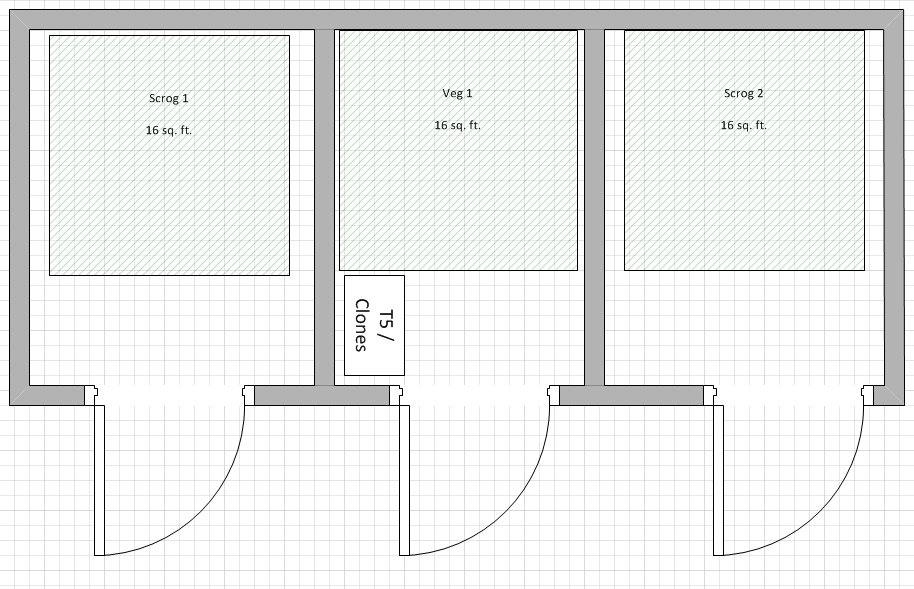blitzman734
New Member
Hey everyone,
I'm looking to build out capn style perpetual grow room in my garage and I'm curious to get some feedback on my layout but most importantly on how I should ventilate it.
I chose to separate the flower rooms so I could air dry for the 4-5 days during harvest right inside the room. This would obviously delay the perpetual nature of it a bit lol but I can at least ensure proper climate / humidity and darkness with this type of layout.
I'm in michigan so my garage can get a little chilly in the winter time, ive already insulated the door with R7 rigid foam board and applied weather stripping to the sides and top to keep the drafts down as well as placing some foam in between the tracks a bit to keep the wind from pushing it open to much. I dont want to permanently seal it but I dont park any vehicles inside of it so there isnt the day to day need to open it.
My ventilation questions are where should I place the carbon filter or filters. As well as how large should my filtered passive air intakes be and should the flower rooms have there own or should I utilize the veg room as a complete lung room and place the carbon filter and intake only within it and place light proof vents between the veg and flower rooms with the negative pressure sucking into veg and out a carbon filter. There are too many options and without prior experience i'm curious how this great community would do it. I've attached a image below of the layout I came up with.
Each of these rooms would be roughly 246 cubic feet.
I know this was a lot to ask and had a lot of information and appreciate your input.

I'm looking to build out capn style perpetual grow room in my garage and I'm curious to get some feedback on my layout but most importantly on how I should ventilate it.
I chose to separate the flower rooms so I could air dry for the 4-5 days during harvest right inside the room. This would obviously delay the perpetual nature of it a bit lol but I can at least ensure proper climate / humidity and darkness with this type of layout.
I'm in michigan so my garage can get a little chilly in the winter time, ive already insulated the door with R7 rigid foam board and applied weather stripping to the sides and top to keep the drafts down as well as placing some foam in between the tracks a bit to keep the wind from pushing it open to much. I dont want to permanently seal it but I dont park any vehicles inside of it so there isnt the day to day need to open it.
My ventilation questions are where should I place the carbon filter or filters. As well as how large should my filtered passive air intakes be and should the flower rooms have there own or should I utilize the veg room as a complete lung room and place the carbon filter and intake only within it and place light proof vents between the veg and flower rooms with the negative pressure sucking into veg and out a carbon filter. There are too many options and without prior experience i'm curious how this great community would do it. I've attached a image below of the layout I came up with.
Each of these rooms would be roughly 246 cubic feet.
I know this was a lot to ask and had a lot of information and appreciate your input.


